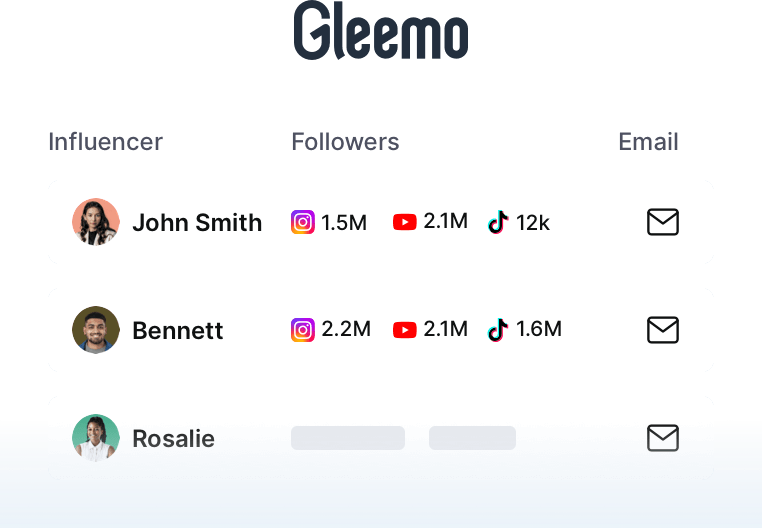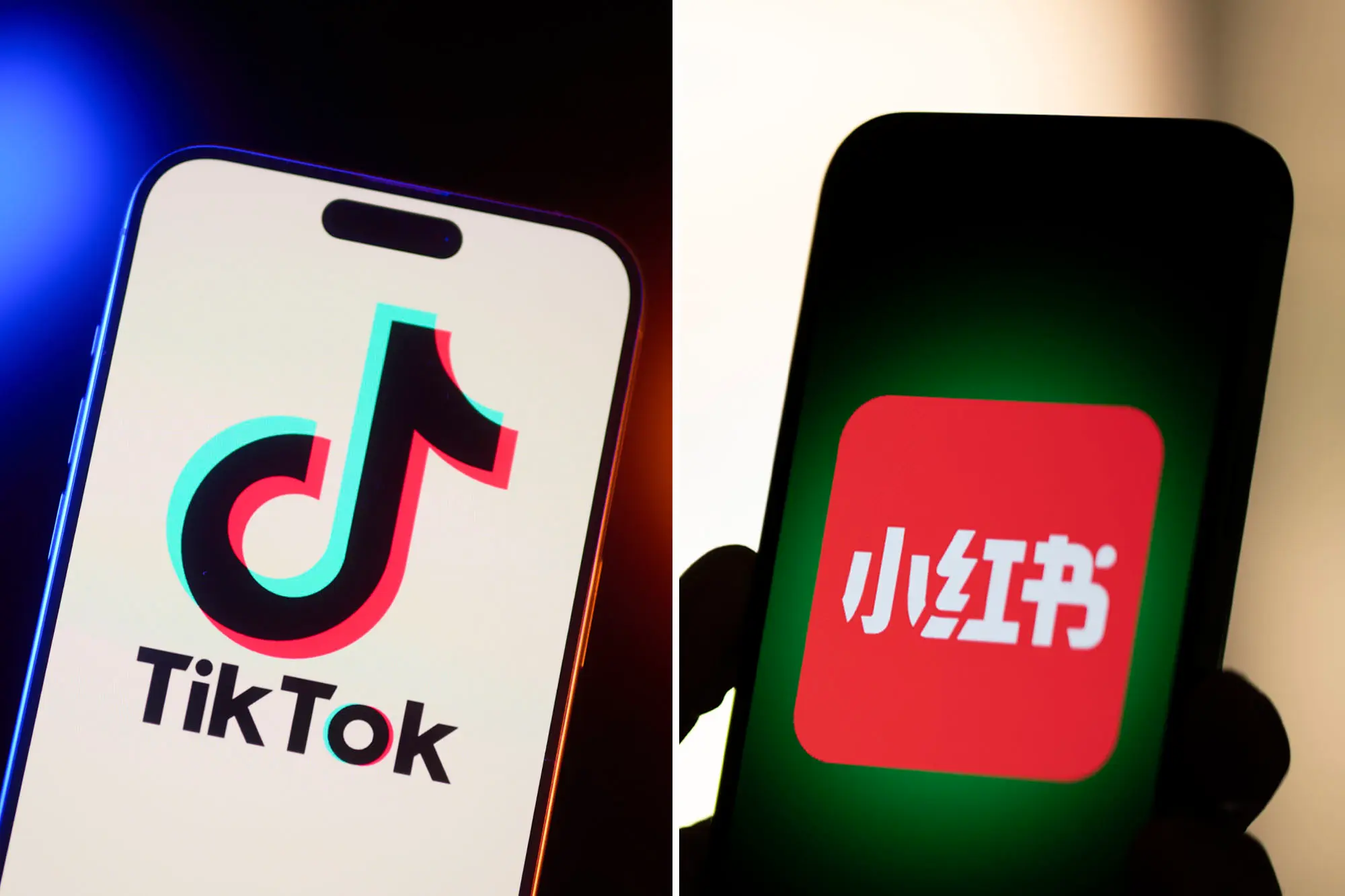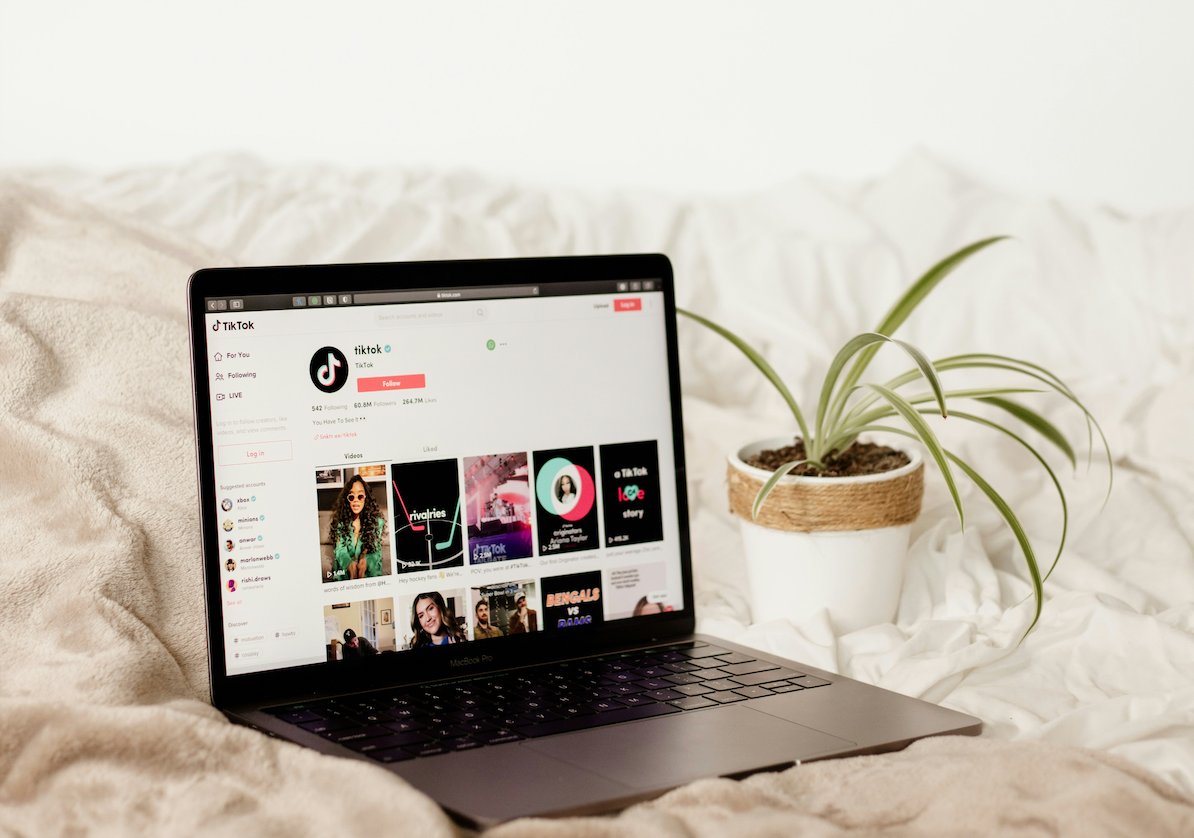
If Influencity doesn’t meet all your needs, here is a list of six robust alternatives that cater to various influencer marketing goals.
Top 6 Alternatives to Influencity
Gleemo
Modash.io
Heepsy
Upfluence
Influence.co
Influence.hero
1. Gleemo
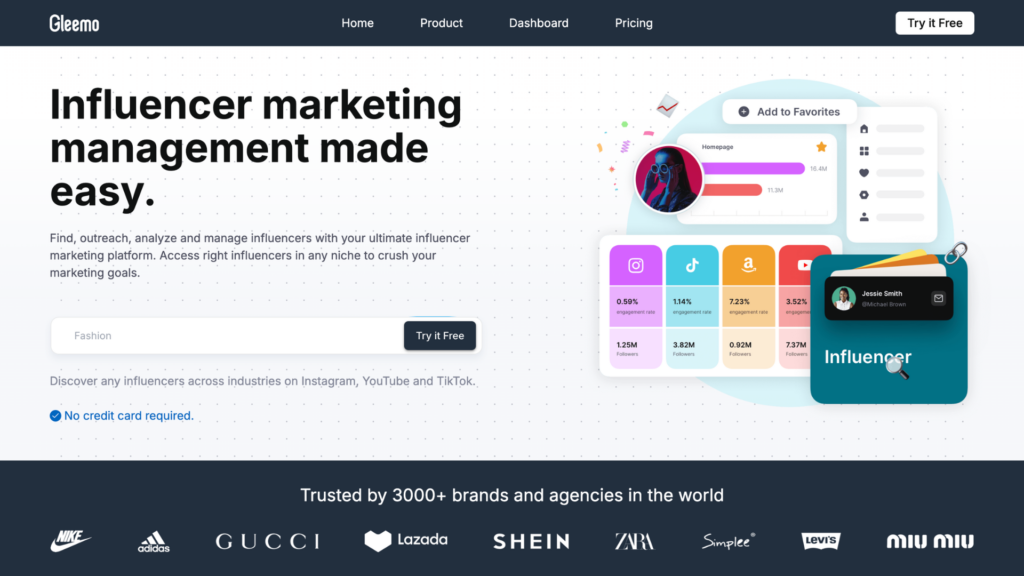
Gleemo is an emerging influencer marketing platform that emphasizes data-driven decision-making and efficient campaign management to track Influencer marketing performance. It stands out with its intuitive interface and tools designed for small to medium-sized businesses.
Key Features
- AI-powered influencer recommendations based on campaign goals and audience fit.
- Campaign management tools to streamline workflows and measure performance.
- Audience insights to analyze follower demographics, engagement trends, and content impact.
- Collaboration tools for seamless communication between brands and influencers.
Pricing
Free version available with 50 Search Credits per Month. Paid plans start at $59/month for more advanced tools.
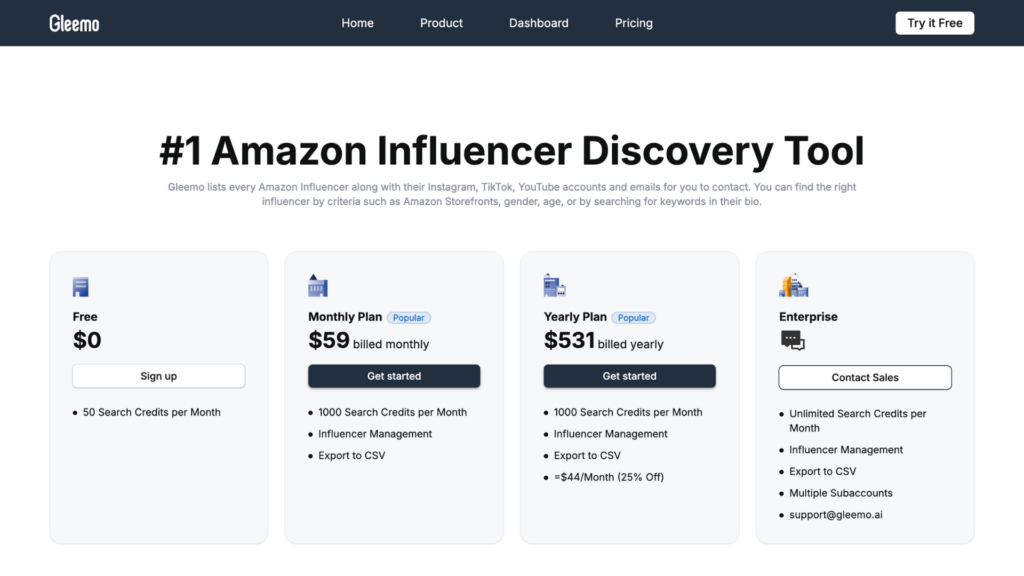
Gleemo Outperforms Influencity considering
- Gleemo is priced to be affordable for small to medium sized businesses.
- It specializes in AI-driven influencer recommendations and simplified marketing campaign tools.
- It is best suited for small and medium sized businesses that are looking for an affordable and intuitive influencer marketing solution.
2. Modash.io
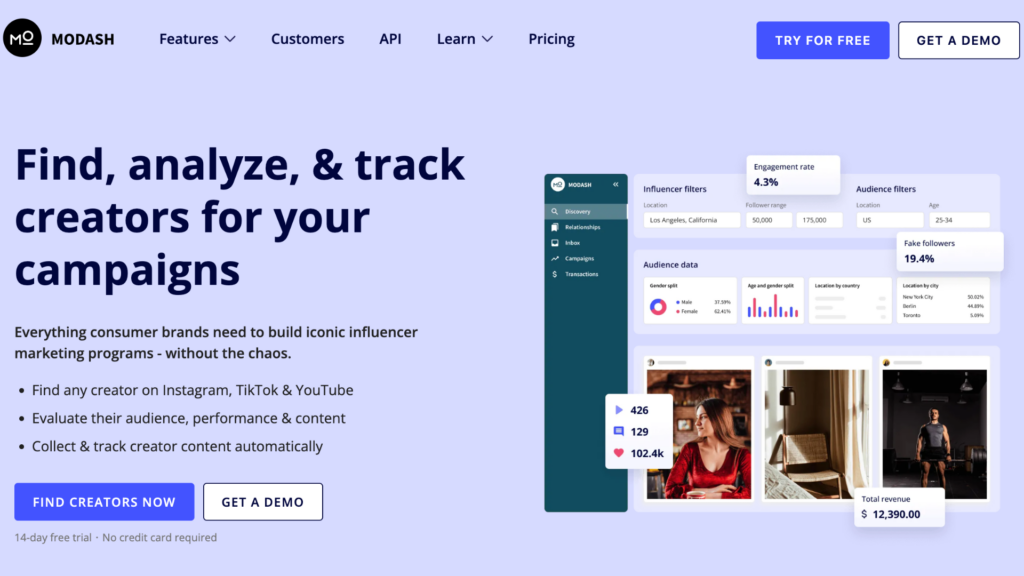
Modash specializes in advanced search and filtering, helping brands find influencers across Instagram, YouTube, and TikTok. It is particularly strong in detecting fake followers and ensuring brands work with genuine influencers.
Key Features
- Access to over 250 million influencer profiles.
- Detailed filtering options, including location, engagement rate, audience demographics, and growth trends.
- Campaign monitoring tools to track influencer posts and their impact on ROI.
- Integrated payment system supporting over 30 currencies.
Pricing
Plans start at $299/month for small teams, with more advanced options for larger organizations.
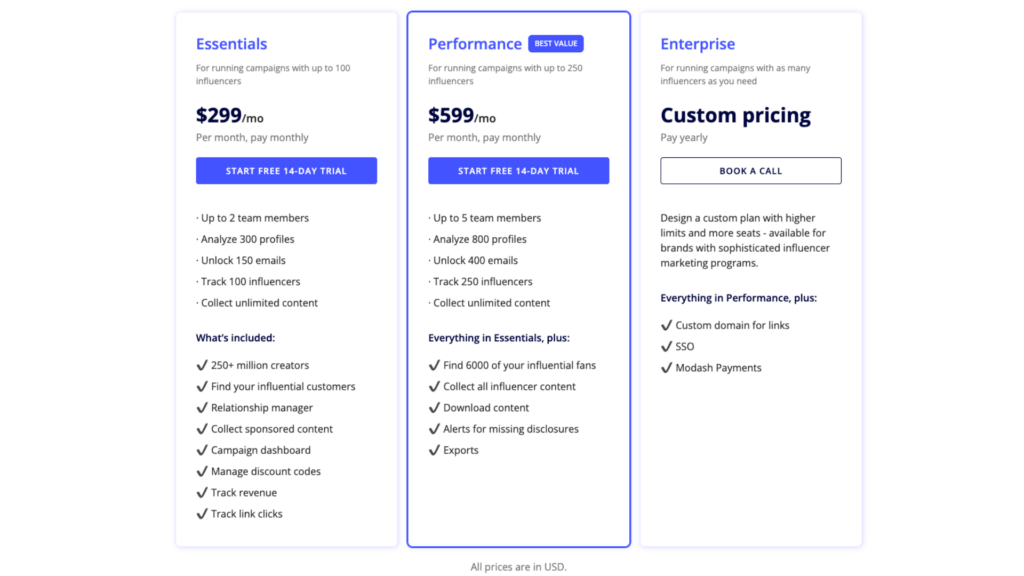
Modash Outperforms Influencity considering
- It has fake influencer checking tools for verifying the authenticity of influencers and finding genuine influencers.
- Modash’s Monitoring feature automatically tracks and captures all content created by influencers about the brand.
- All of Modash’s plans offer unlimited influencer lists, while Influencity’s basic plan offers only one influencer list.
3. Heepsy
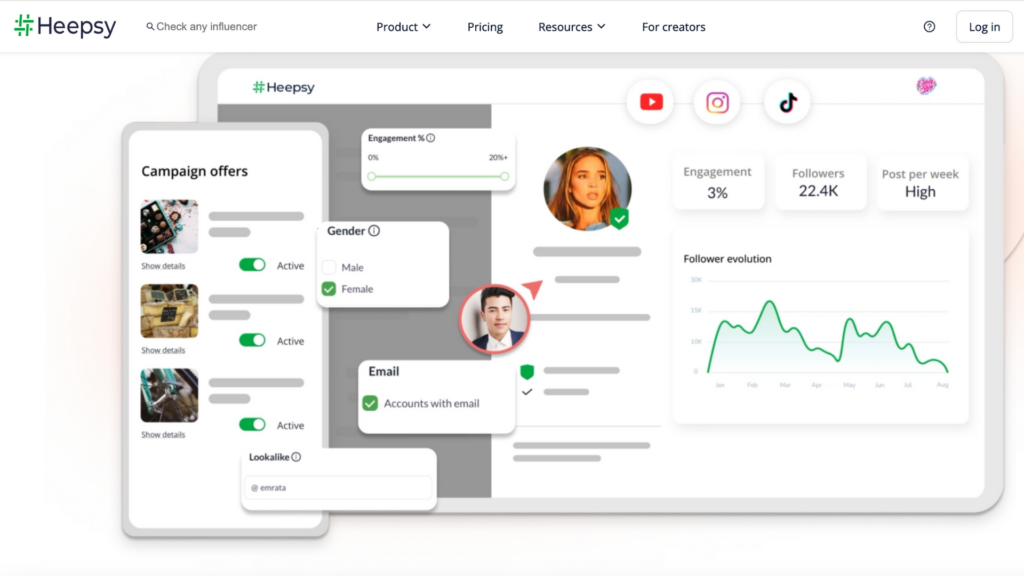
Heepsy is a cost-effective solution for small businesses or startups entering influencer marketing. It’s a cloud-based influencer search engine designed to help organizations discover social media influencers on Instagram, YouTube, and TikTok. Filter searches based on specific locations, categories, audience demographics and engagement rates.
Key Features
- Tools for detecting fake followers to ensure authentic partnerships.
- Search filters for audience demographics, location, and interests.
- Exportable influencer data for easy integration with other tools.
Pricing
Plans start at $69/month, making it one of the most affordable options.
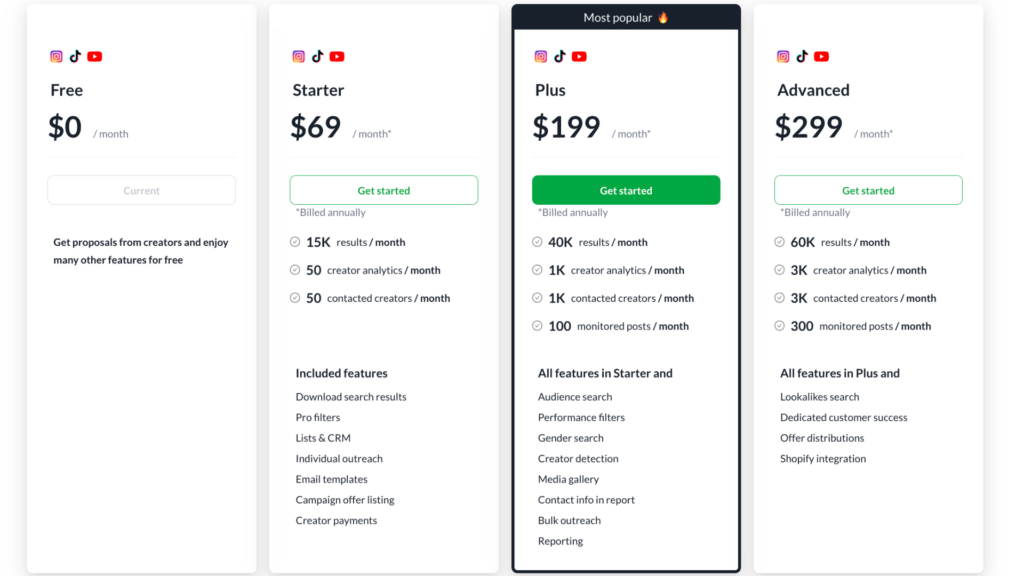
Heepsy Outperforms Influencity considering
- Heepsy offers a free plan to experience the features without having to enter a credit card.
- Smaller teams with limited budgets looking for affordable pricing can consider Heepsy.
4. Upfluence
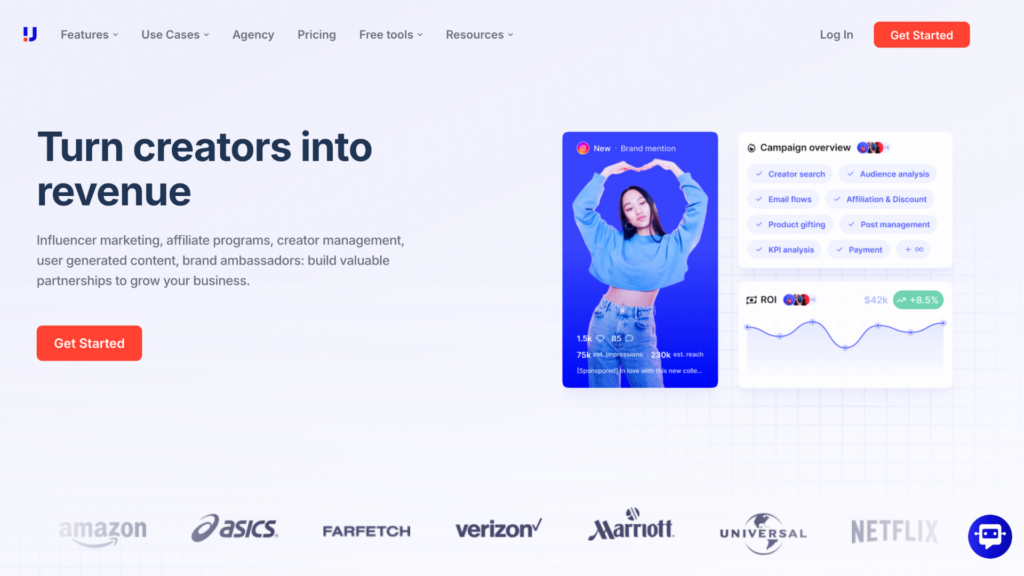
Upfluence is tailored for e-commerce brands, integrating seamlessly with platforms like Shopify and WooCommerce to convert influencer campaigns into sales. Its strong focus on ROI makes it a preferred choice for data-driven marketers.
Key Features
- E-commerce integration allows brands to track sales directly generated by influencer campaigns.
- Advanced audience insights, helping brands target niche markets effectively.
- Tools for campaign management, influencer outreach, and automated workflows.
Pricing
Custom pricing based on team size and features needed.
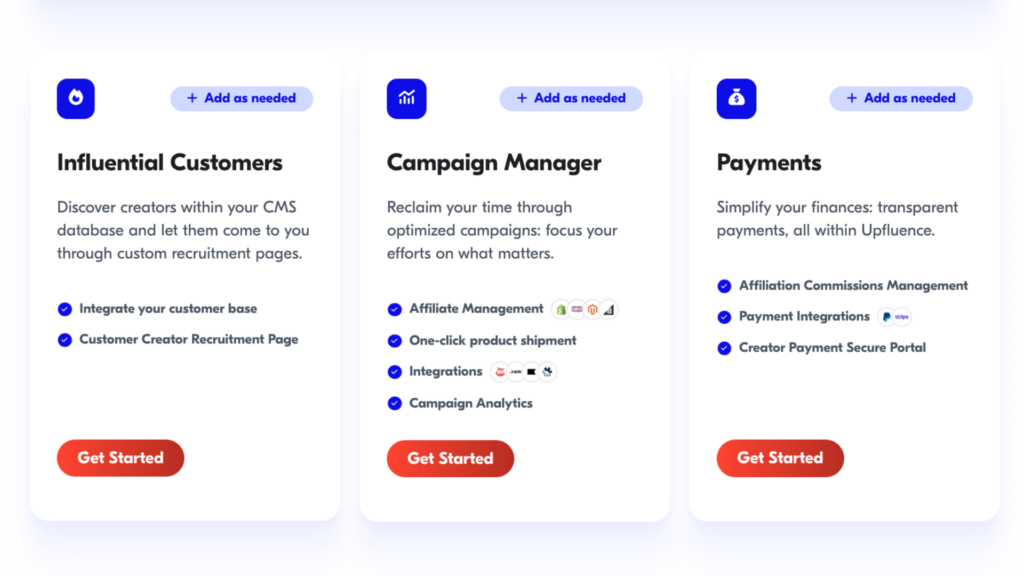
Upfluence Outperforms Influencity considering
- Upfluence covers a huge database of influencers on major social media platforms like Instagram, TikTok, X, Pinterest, YouTube and Twitch.
- It integrates with popular tools like HubSpot, Shopify, Stripe, and Mailchimp and is perfect for driving conversions and tracking sales.
- Upfluence’s social listening tools allow you to monitor competitors and their mentions, specific influencers, or topic hashtags.
5. Influence.co
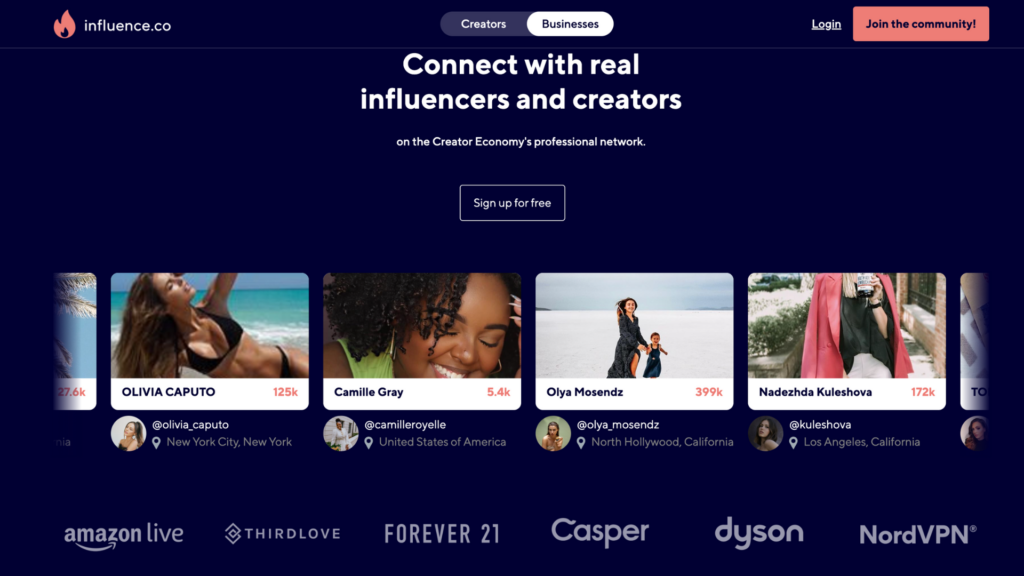
Influence.co is a social networking platform for influencers and brands. It offers a unique approach by fostering a community-driven atmosphere, allowing brands to connect with influencers directly.
Key Features
- Free access to an influencer marketplace.
- Portfolio browsing to view influencer profiles and past collaborations.
- Campaign tools for collaboration and tracking.
Pricing
Free version available with basic features. Paid plans start at $600/month for more advanced tools.
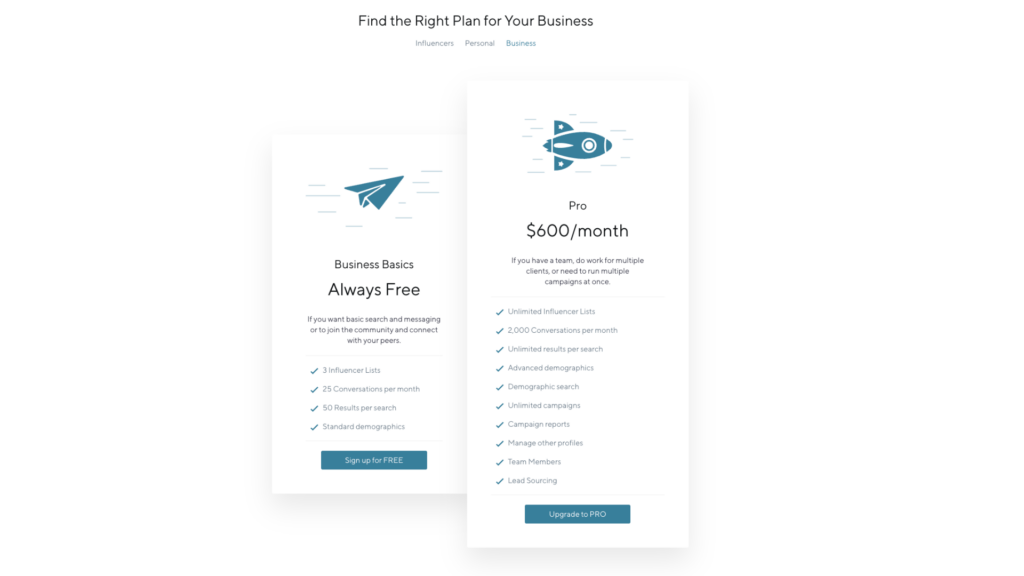
Influence.co Outperforms Influencity considering
- Influence.co supports influencer gifting or content & UGC collection, making up for influencity’s lack of functionality.
- Unlike Influencity, which focuses solely on its software platform, influence.co also offers agency services.
6. Influence Hero
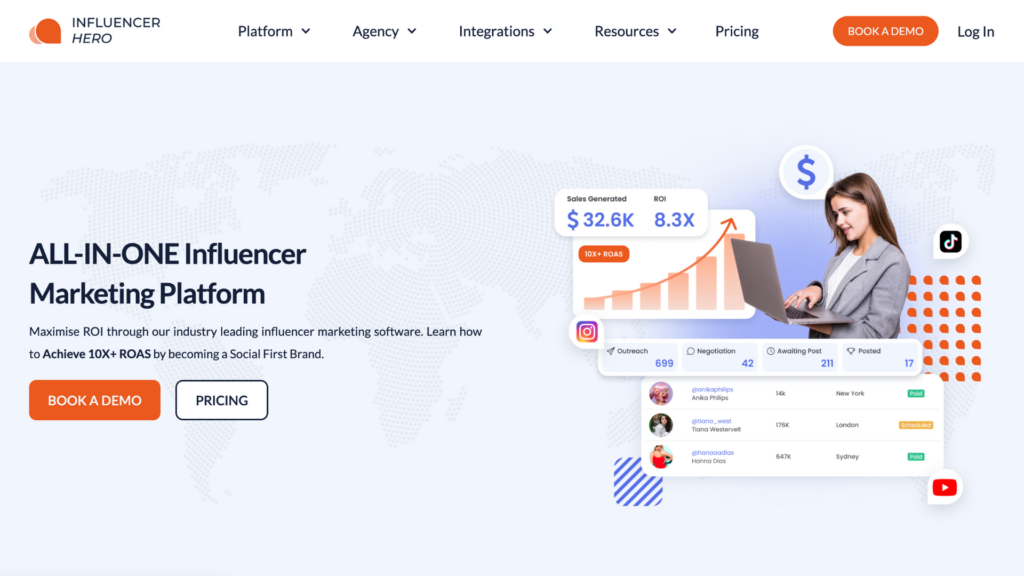
Influence Hero caters to enterprise-level businesses with its CRM-like functionality and advanced campaign tools. It is best suited for managing large-scale influencer programs and extensive outreach efforts.
Key Features
- AI-driven influencer recommendations for optimized targeting.
- Built-in CRM to manage relationships with influencers.
- Advanced analytics and reporting tools for large-scale campaigns.
Pricing
Starts at $209/month, with custom plans for enterprise needs.
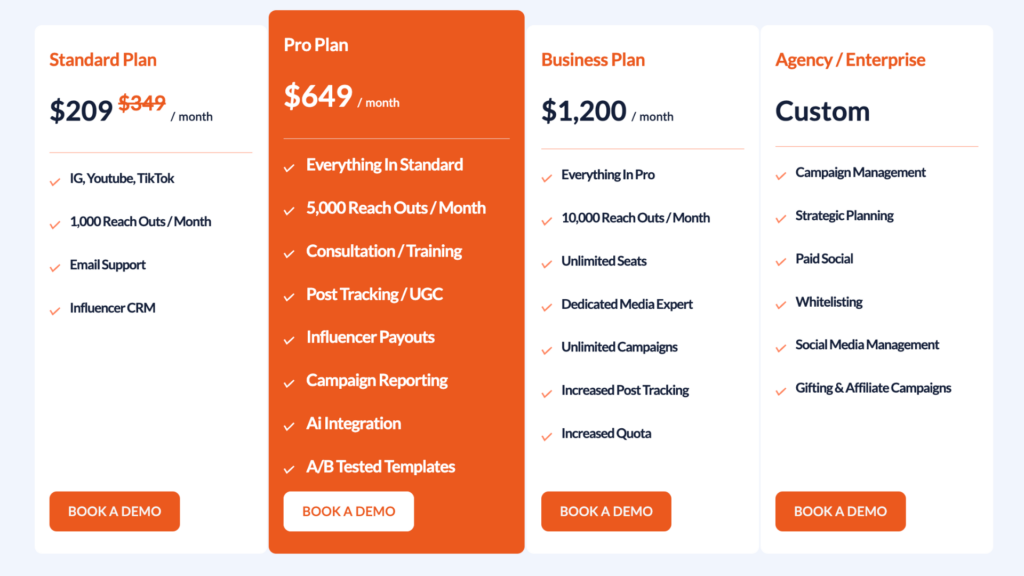
Influence Hero Outperforms Influencity considering
- Influence Hero covers all the features of a marketer’s marketing tool, making it a highly versatile choice for brands looking for a one-stop solution.
- The ability to cover a wide range of social media platforms, from discovery to analytics and payment solutions, makes it a powerful alternative to influencity.
Everything You Need to Know Ahout Influencity
What is Influencity?
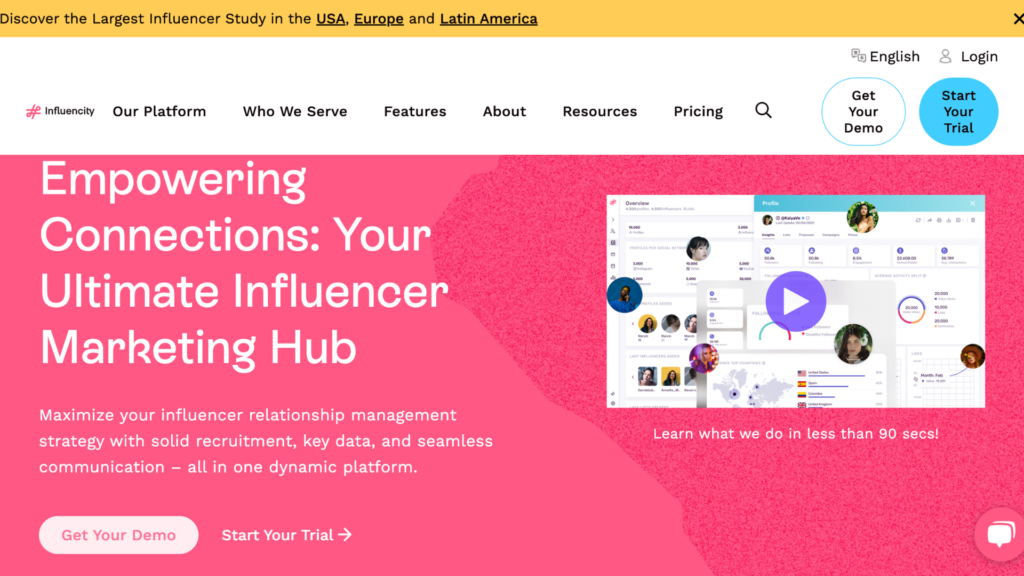
Influencity is an influencer marketing platform designed to simplify influencer discovery, campaign management, and ROI analysis. Its tools help brands identify the right influencers, monitor campaign performance, and optimize strategies to maximize impact.
With features like advanced filtering, centralized campaign workflows, and detailed reporting, Influencity caters to both small businesses and enterprise-level organizations.
Influencity offers four flexible pricing plans tailored to meet the needs of businesses of various sizes. Each plan includes essential features for influencer discovery and management, with higher-tier plans adding advanced tools for campaign reporting, social media management, and analytics.
When selecting a plan, consider the size of your team, the complexity of your campaigns, and your reporting needs. Influencity also offers a 7 days free trial, allowing users to explore its features before committing to a subscription.
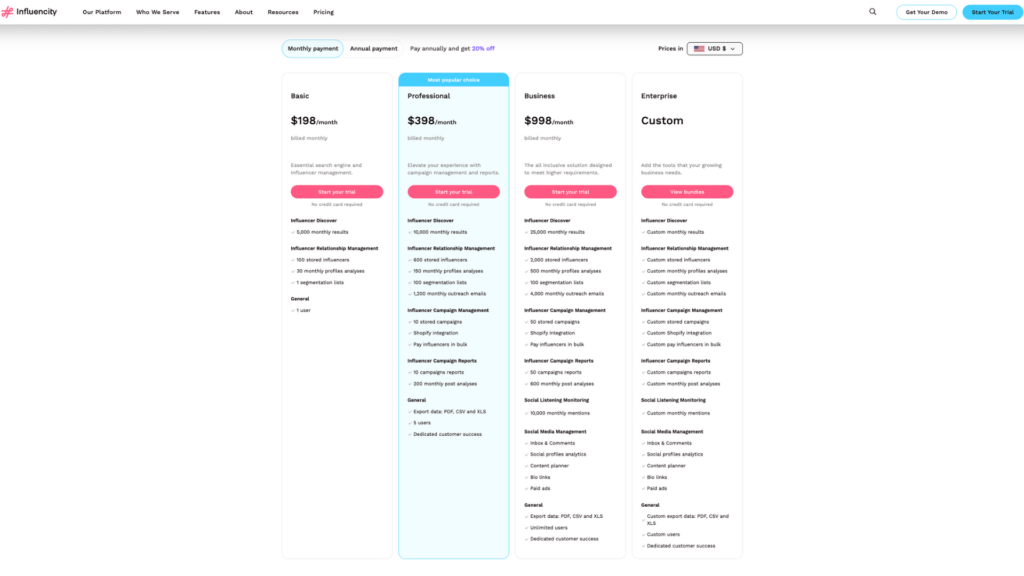
Influencity Reviews
Based on reviews from platforms like G2 and Trustpilot, Influencity users often highlight the following pros and cons:
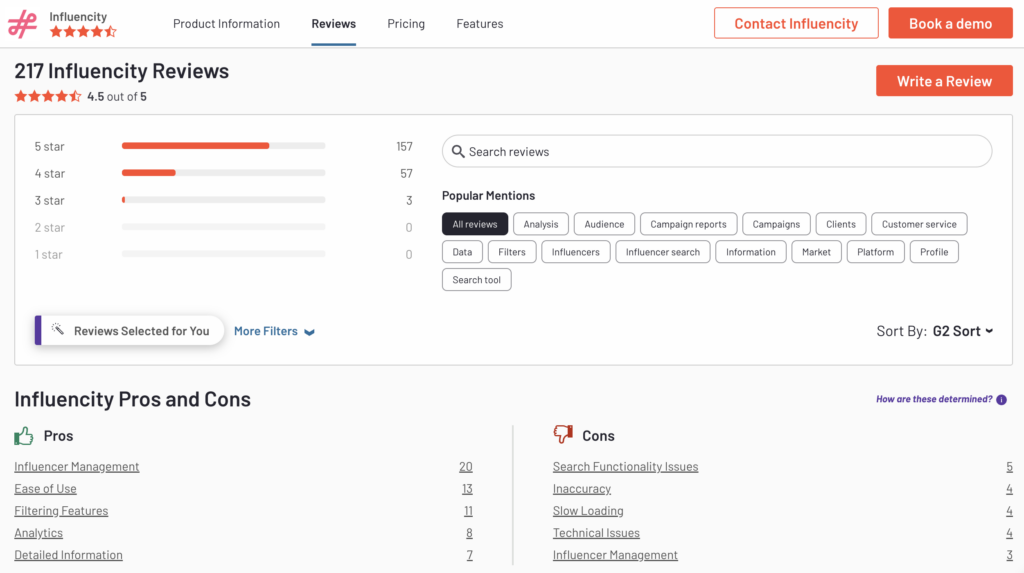
Pros:
- Easy filtering and search options: many users appreciate Influencity’s filtering tools, which make finding relevant influencers a quick and efficient process.
- User-Friendly interface: Influencity’s layout and design are noted for being intuitive, which is beneficial for marketers who may be new to influencer marketing.
- Detailed and accurate metrics: according to several G2 reviews, users find Influencity’s analytics very helpful for tracking engagement and evaluating campaign performance.
Cons:
- Data accuracy issues: some reporting platforms provide inaccurate indicators and demographic information.
- Limited influencer variety: some users feel that there is a lack of diversity in the influencers available, especially for niche markets.
- Difficult cancellation process: the cancellation policy and lack of refunds can cause some dissatisfaction.
How to Choose the Right Influencer Marketing Tool
While all these tools offer valuable features, the right platform for your brand will depend on:
Brand Scale
Smaller teams may find Heepsy or Influence.co more cost-effective, while larger organizations may benefit from the advanced features in Influence Hero or Influencity.
Goals
If authenticity is your focus, Modash.io excels in fraud detection. For e-commerce, Upfluence’s sales integrations are ideal.
Budget
Consider the value each tool brings relative to your budget and expected ROI.Ultimately, there’s no one-size-fits-all solution. Carefully evaluate your brand’s priorities, resources, and campaign objectives to select the platform. Trying free trials or exploring demo versions is an excellent way to find the perfect fit.
